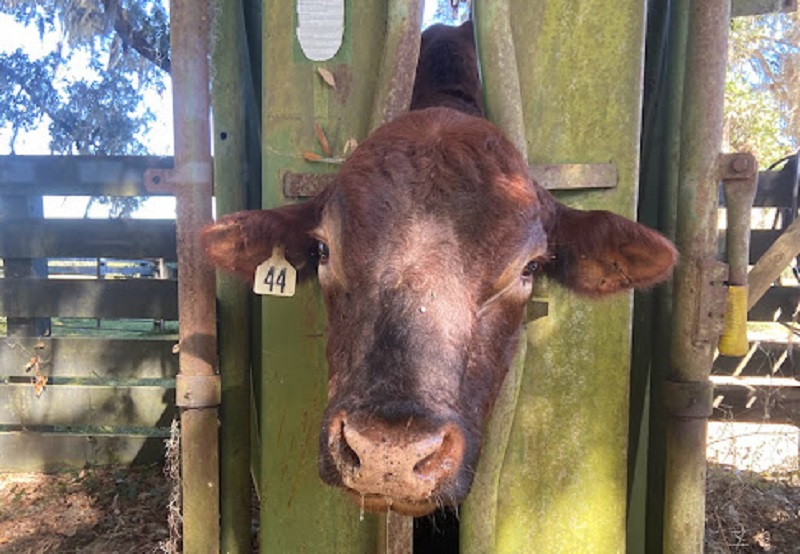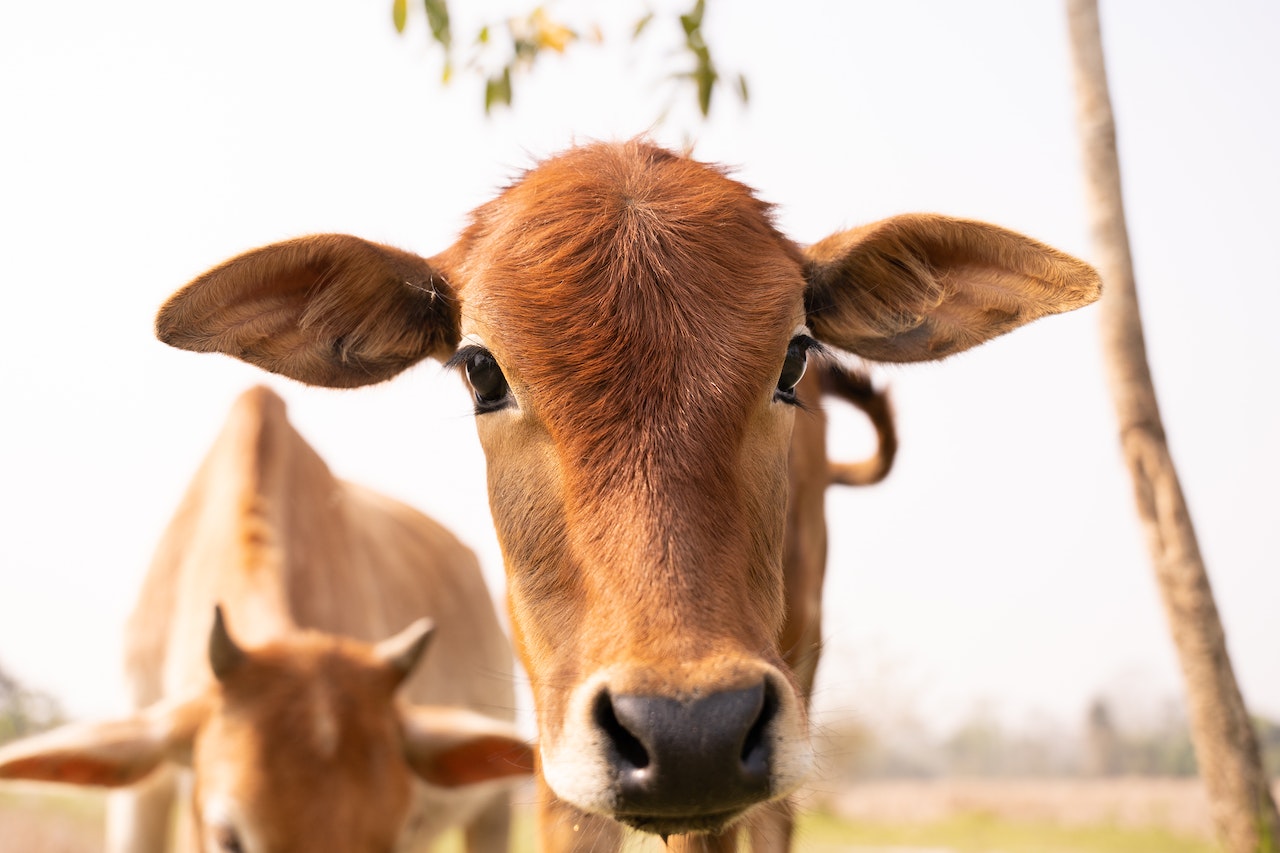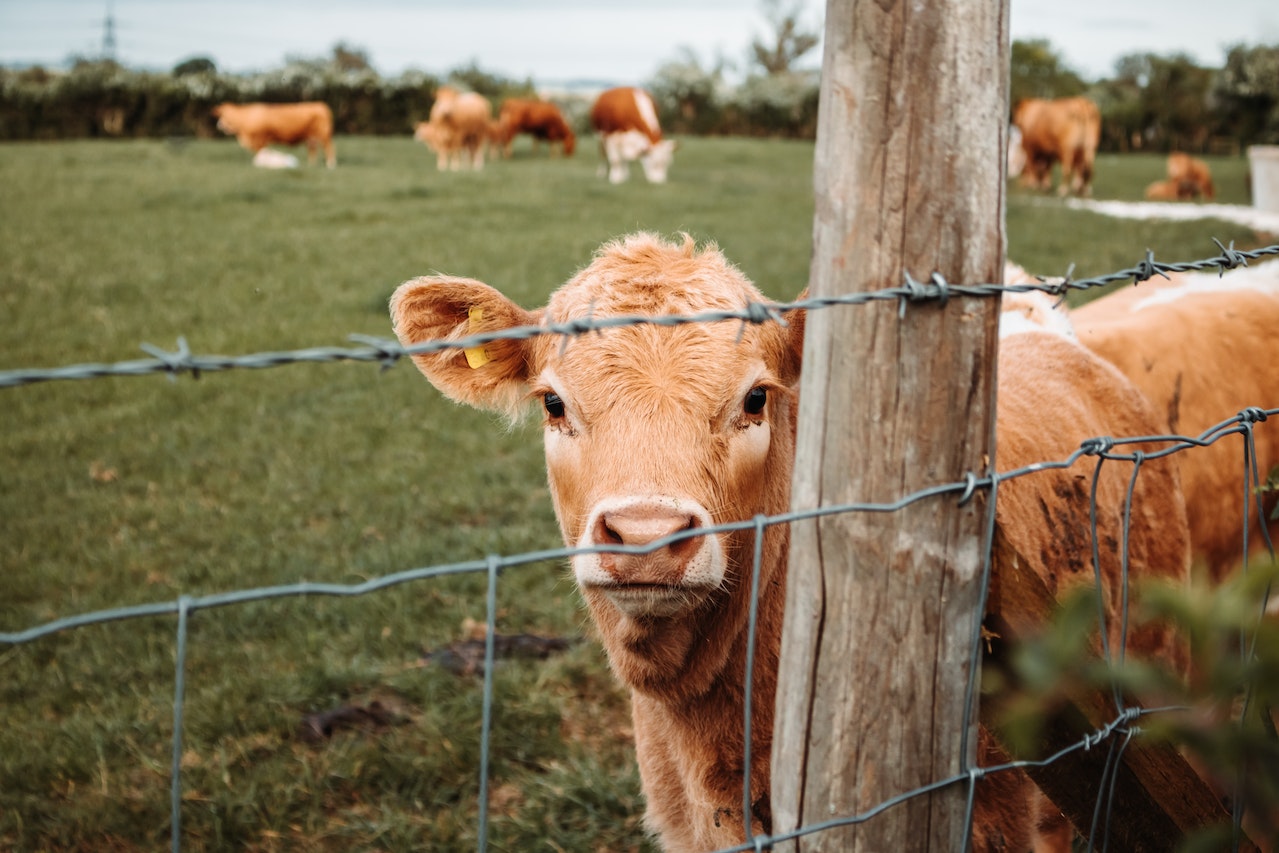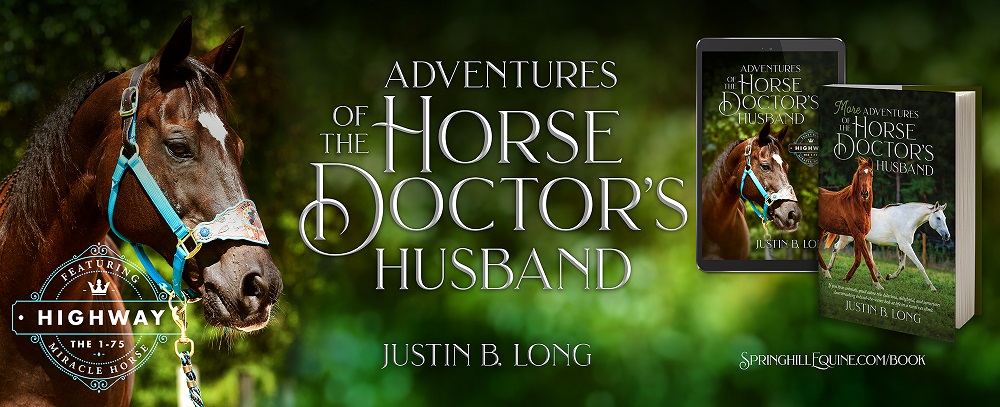Whinny’s Wisdoms

Hey everybody, Whinny here with some cow and goat (or ruminant, as my docs call them) stats for you: Did you know that Florida is the ninth largest cattle producing state of the country? It’s true! We’re also the ninth largest in meat goat production. The cattle raised here are primarily raised in small operations, with almost 80% having less than 49 head (that’s how we describe cow numbers).
Breeding
Let me start off by saying one thing very clearly: if you own cattle or any other large species you absolutely must have facilities for working with them. Go ahead and check out my previous blog on livestock housing facilities for more details. But today we’re going to talk about making more cows–or other ruminants like sheep and goats.

Anytime you’re planning on breeding an animal you should think about WHY. Yes, baby animals are super cute, but there are already a ton of them out there! This consideration is even more important in pet animals like dogs, cats, and horses, but the reasoning applies to food producing animals such as cattle and small ruminants as well. We’re going to talk a bit about breeding and producing cattle in Florida. A lot of this will apply whether you’re breeding in order to make or sell beef products, or if you’re just making more pets.
A veterinarian’s role in quality food production is maintaining animal health and well-being, supporting producers in managing the health and productivity of their animals, and monitoring the safety and wholesomeness of animals entering the food chain. What does that mean?
Whinny Wisdom: All herds should have a veterinarian involved in their care and maintenance who can help set protocols. Paying for a veterinarian at the start will actually save you money in the end.
Now, the details. Florida is a bit different than other areas of the country because we don’t have much, if any, of that very cold white stuff that comes from the sky. For that reason, calves are normally hitting the ground between January and March. A cow’s gestation is about 9 months, so the breeding season should be between April and May. Calves are weaned at between 7-9 months of age, so these hardworking mama cows are getting pregnant while they are still producing milk most of the time–stay tuned for another blog on nutrition because it’s really important!
These time tables are assuming you are trying to have calves born in a select window of time so they can be reared together and sold together, which is often best for their health and your pocketbook. When you have a specific breeding season planned, the next step is figuring out how you’re going to get those cows bred! Options include natural service by a bull–which can be purchased or rented–or artificial insemination of some sort.

A bull will often have the highest conception rates, but they certainly come with some risks–and you’d better make sure you have good fencing and facilities! Some health considerations for the bull include their body condition score (it can often drop a full point over the course of a breeding season), mineral consumption, and transmissible venereal disease risk. It’s often recommended to purchase a bull that has had a breeding soundness exam performed which also tests for some of the venereal diseases.
Bulls can occasionally harm the cows they are meant to breed, and can get injured themselves. If you purchase a bull to keep over multiple years, it is important that he not breed any of his daughters, and you must know that his fertility may decline over time. There are some people who choose to keep a bull out with the herd at all times and not have a defined breeding season. This is an option, however that also means you must be prepared for newborn calves every day of the year! As we’ll discuss, newborn calves are not always easy.
The females are generally the most important part of the equation (aren’t we always?). A female bovine that has not had her first calf yet is known as a heifer, and she becomes a cow as soon as she gives birth. If natural service mating is being used, the bull will be able to detect when cows are in heat. If artificial methods are being used, the best approach will be using injectable medications to bring her into heat when the doctor wants her to be, so that they can breed her at the best time. Cows will be much less likely to come into heat if they are still lactating, but it is possible.
Prior dystocia (difficult birth), retained placenta, or uterine infection of any sort are likely to delay her ability to get pregnant. The female’s nutritional state is probably the biggest factor for achieving pregnancy. If you’re not sure how to check her body condition score, you should definitely schedule a Herd Evaluation with one of our veterinarians so they can teach you all about that!
Once breeding has happened in one way or another (there’s some birds, there’s some bees, you know the drill), cows should be checked for pregnancy by a veterinarian. When to schedule that will vary by the specific herd conditions, but will always require handling facilities such as a chute or at least a head catch. Those with confirmed pregnancies should be monitored closely for the next 9 months. There are tons of risks to the fetus and dam: Brucellosis, Leptospirosis, Listeria, Neospora, estrogenic plants, and Bovine Viral Diarrhea Virus are just a few. She may also have a spontaneous abortion or one caused by stress or an incorrect medication.

Calf Care
Now for the fun and Cow–ute part: babies! A newborn calf is on average 60-75 lbs. Cows most often have singleton calves but occasionally will have twins. Dystocia, or difficult birth, is always a risk and often needs veterinary intervention. One of the best things you can do is ensure the bull isn’t too large and has a good “calving ease score,” meaning he produces smaller, easier to birth calves.
There are five essential aspects of newborn calf care: Colostrum, Cleanliness, Comfort, Calories, and Consistency.
- Colostrum is the mom’s first milk, and needs to be in the calf by 2 hours after birth ideally. As soon as the calf consumes anything, its gut will begin closing, so it’s vital the first thing it consumes is colostrum.
- Cleanliness: Cows should give birth in a clean, dry, comfortable place – that can be a field, barn or stall.
- Calories: If the calf is nursing from a good mama, she should take care of calories, but we must monitor calves for growth and supplement if they’re not getting enough. Some choose to offer a creep feed from the first few days of age.
- Consistency has to do with food, location, and environment. Calves get easily stressed, and when they are stressed they get sick. If you have kept a tight breeding season, you should have a tight calving season, so there shouldn’t be too many age groups together. If the calving season will not be so streamlined, it’s a good idea to separate out cows about to calve into a clean pasture away from the other adults and older calves.
We didn’t even tackle the nitty gritty of vaccination, deworming, and other health protocols, but these are vitally important if you intend to breed cows! They are also unique to each herd though, so be sure to have a great relationship with your local cow vet so they can help out! Now to go enjoy my favorite cow breeding byproduct–cheese!
Until next week,
~Whinny
P.S. Have you subscribed to my blog yet? It’s the best way to make sure you get my latest post every week. Just scroll down and put your email in the purple box. That’s it! Good human 🙂
 Whinny’s Wisdoms is the official blog of Whinny the Clinic Mouse at Springhill Equine Veterinary Clinic in Newberry, Florida. If you liked this blog, please subscribe below, and share it with your friends on social media! For more information, please call us at (352) 472-1620, visit our website at SpringhillEquine.com, or follow us on Facebook!
Whinny’s Wisdoms is the official blog of Whinny the Clinic Mouse at Springhill Equine Veterinary Clinic in Newberry, Florida. If you liked this blog, please subscribe below, and share it with your friends on social media! For more information, please call us at (352) 472-1620, visit our website at SpringhillEquine.com, or follow us on Facebook!
[jetpack_subscription_form title="Subscribe to Whinny's Wisdoms"]

